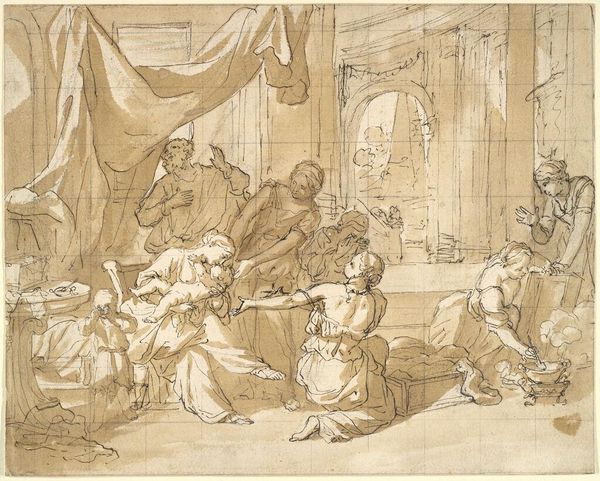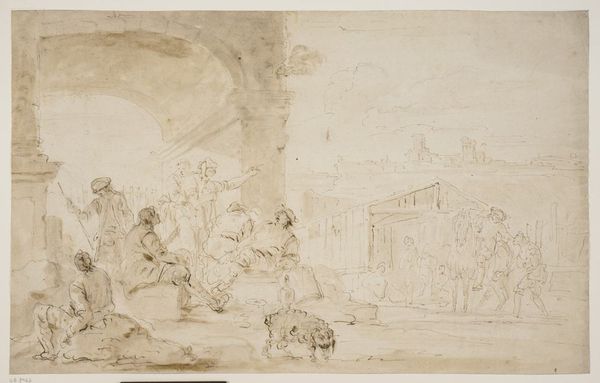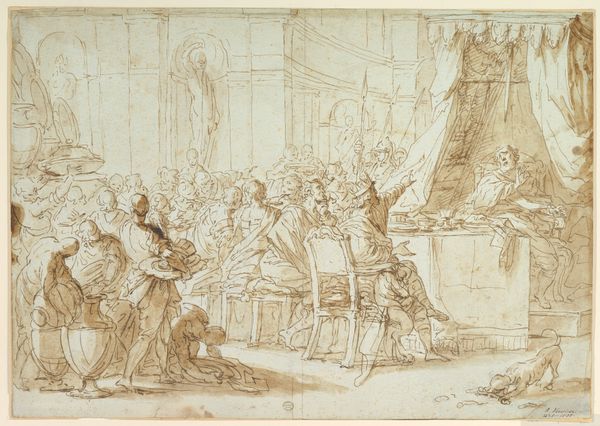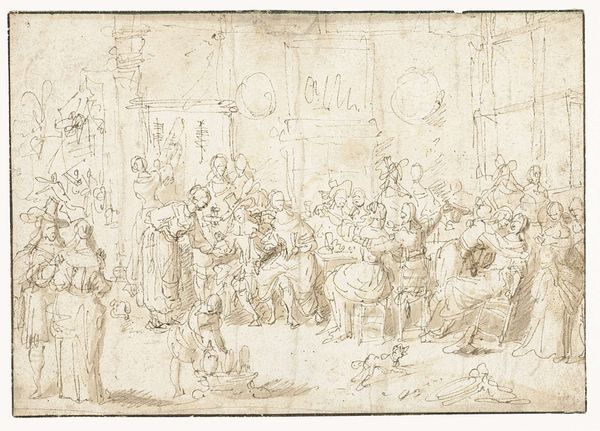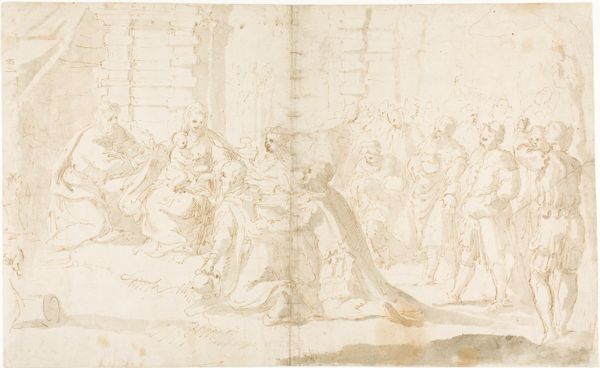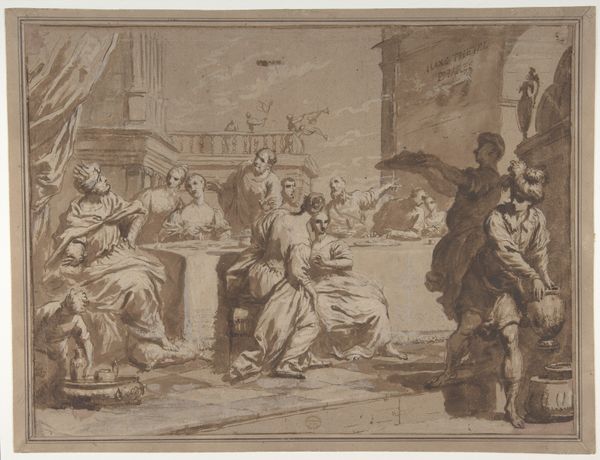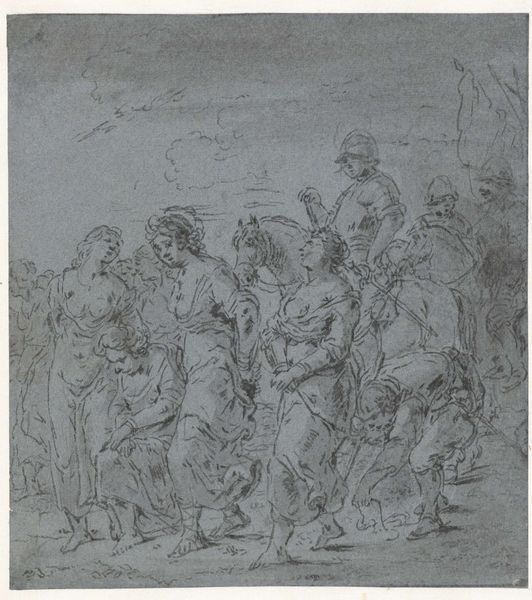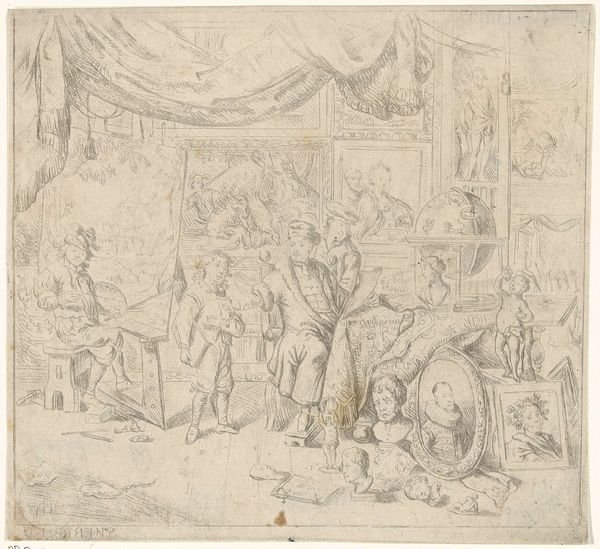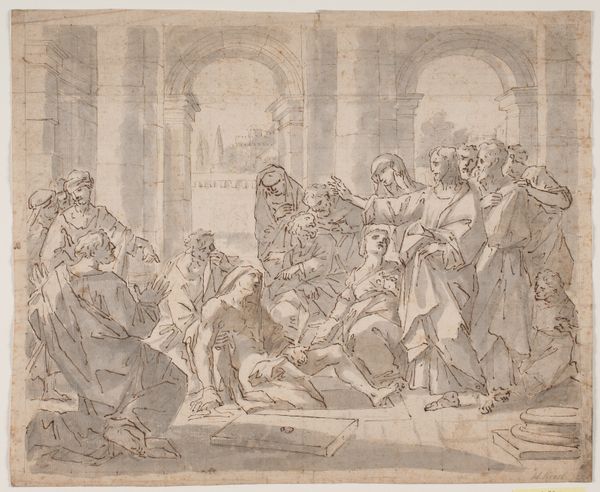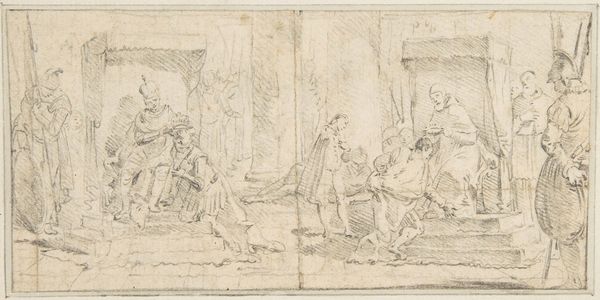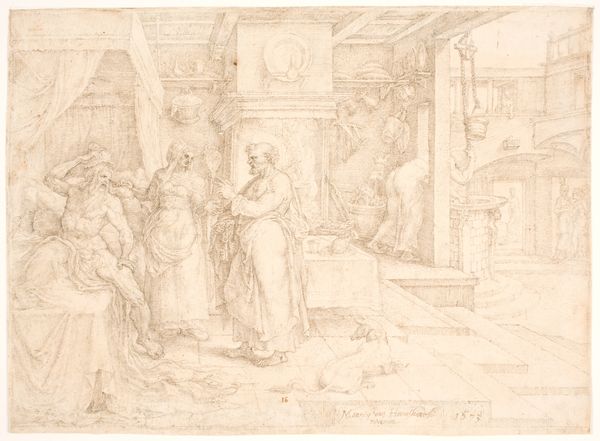
drawing, paper, ink, pencil, pen
#
drawing
#
narrative-art
#
baroque
#
figuration
#
paper
#
ink
#
pencil
#
pen
#
genre-painting
#
history-painting
Dimensions: height 210 mm, width 327 mm
Copyright: Rijks Museum: Open Domain
Elias van Nijmegen sketched these two scenes from the story of Joseph using graphite. On the left, we see Joseph interpreting dreams, a scene heavy with ancient symbolism. Dreams, in antiquity, were seen as pathways to divine knowledge, and the ability to interpret them was a mark of great wisdom. Now, consider the motif of interpretation. It echoes through history, from the Oracle of Delphi deciphering cryptic prophecies to the psychoanalyst's couch, where hidden meanings are drawn from the subconscious. This act of unveiling secrets carries profound psychological weight. It evokes our primal desire to understand the unknown, to penetrate the veil of mystery that surrounds us. The dream interpreter is not merely a passive observer but an active participant in shaping destiny. Through their insight, they unlock possibilities and set in motion events that can alter the course of history. This power to influence fate taps into our collective anxieties and aspirations, making the figure of the interpreter eternally compelling. Over time, this figure resurfaces in different forms, continually adapting to new cultural contexts, yet always retaining its core essence.
Comments
No comments
Be the first to comment and join the conversation on the ultimate creative platform.
